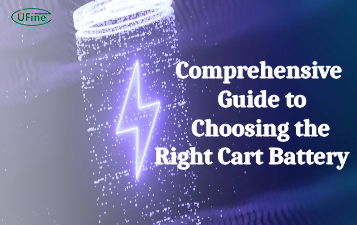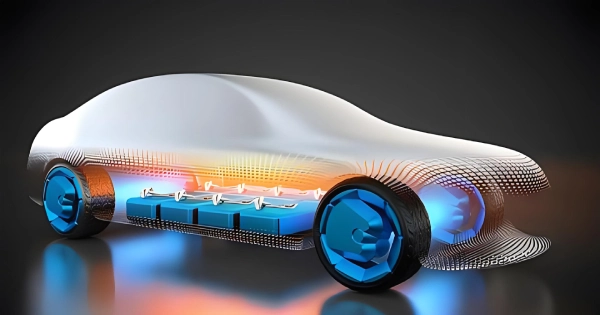Part 1. Lithium car battery principle and structure
A lithium-ion car battery is a type of battery in which charge and discharge are achieved by transferring lithium ions between the positive and negative electrodes. It consists of a positive pole, a negative pole, an electrolyte, and a diaphragm.
1. Lithium-ion car battery positive electrode
The cathode material of lithium-ion car batteries usually adopts lithium compounds, such as lithium manganate (LiMn2O4), lithium cobaltate (LiCoO2), and lithium iron phosphate (LiFePO4). Positive electrode materials can react with lithium ions during the charging and discharging process to achieve charge and discharge.
2. Lithium-ion car battery negative electrode
The negative electrode material of lithium-ion car batteries usually adopts graphite, which can adsorb and store lithium ions. During charging, lithium ions are released from the positive electrode, migrate through the electrolyte to the negative electrode, and become embedded in the graphite structure. Lithium ions are de-embedded during discharge from the negative electrode and migrate to the positive electrode.
3. Lithium-ion car battery electrolyte
The electrolyte is the medium between the positive and negative electrodes and is usually an organic solution or polymer gel. It conducts electricity and provides a transport channel for lithium ions.
4. Lithium-ion car battery diaphragm
The diaphragm of a lithium-ion car battery is located between the positive and negative electrodes to prevent direct contact and short circuits. The diaphragm is usually made of polymer material with good ion transport properties and mechanical strength.
Lithium ions migrate from the positive electrode to the negative electrode during charging and discharging. This is accompanied by the flow of electrons from the negative electrode to the positive electrode via an external circuit to complete the closure of the current. When charging, the current flows into the battery from the external power source, and lithium ions migrate from the negative terminal to the positive terminal. When discharging, the current flows out of the battery, and the lithium ions migrate from the positive pole to the negative pole.
The principle and structure of lithium car batteries determine their advantages of high energy density, long cycle life, fast charging and discharging ability, and low self-discharge rate. Therefore, lithium car batteries are widely used in electric vehicles.
Part 2. Advantages and applications of lithium car battery
Lithium battery for electric vehicles has the following advantages over traditional power sources (such as internal combustion engines):
1. High energy density
Lithium batteries have a high energy density and can store more energy, thus providing a longer range. This allows electric vehicles to meet daily driving needs and reduce the frequency of recharging.
2. High Efficiency
Lithium batteries have a high energy conversion efficiency, typically over 90 percent. In contrast, internal combustion engines have a lower energy conversion efficiency of around 20 to 30 percent. High efficiency means EVs can utilize energy more efficiently and reduce energy wastage.
3. Environmentally friendly and zero emissions
EVs use lithium batteries as a power source and do not produce tailpipe emissions, reducing air pollution and greenhouse gas emissions. This is important for improving air quality and combating climate change.
4. Low noise
Compared to the noise and vibration of an internal combustion engine, EVs run quieter and smoother. This makes EVs more comfortable in urban and indoors and reduces noise pollution.
5. Low maintenance cost
Compared to vehicles with internal combustion engines, EVs have lower maintenance costs. EVs do not have complex components such as lubricants and exhaust systems, reducing the need for maintenance and upkeep.
6. Renewable energy charging
Lithium batteries can be charged by renewable energy sources such as solar and wind. This further reduces dependence on traditional energy sources and achieves more sustainable energy use.
Part 3. Final Thoughts
Lithium-ion car batteries have the advantages of high energy density, high efficiency, environmentally friendly zero emission, low noise, low maintenance cost, and renewable energy charging compared to traditional power sources. This makes electric vehicles a sustainable, clean, and economical mode of transport.
Part 4. FAQs
-
How long will a lithium car battery last?
A lithium car battery can last anywhere from 5 to 10 years, depending on factors such as usage, maintenance, and overall battery health. -
What are the disadvantages of lithium batteries in cars?
Disadvantages of batteries in cars include higher cost, potential fire risk if mishandled, and concerns regarding the environmental impact of lithium mining and battery disposal. -
What cars use lithium?
Many electric and hybrid vehicles (EVs) use lithium batteries, including popular models like Tesla Model S, Nissan Leaf, Chevrolet Bolt, and BMW i3. -
Is there enough lithium to make all cars electric?
There are currently enough lithium resources to support the growing demand for electric vehicles. However, the availability of lithium and its sustainable extraction remain important factors to consider for the long-term scalability of electric vehicle production. -
Is lithium bad for cars?
Lithium is not inherently bad for cars. It is widely used in electric vehicles (EVs) and hybrid vehicles to provide energy storage for improved performance and efficiency.
Related Tags:
More Articles

Comprehensive Guide to Choosing the Right Cart Battery
Choosing the right cart battery ensures optimal performance and longevity. This guide covers cart battery types and helps you make an informed choice.
The Ultimate Guide to 18650 Button Top Battery
18650 button top batteries are popular for their high energy density and reliability. This guide covers their key features, usage, and maintenance tips.
The Power of Slim: Unveiling the Potential of Flat Lithium Ion Battery
Flat lithium-ion batteries power devices from phones to vehicles. This article explores their design, benefits, types, applications, charging, and safety.
The Comprehensive Guide to Battery Balancing and Battery Balancer
Battery balancing and balancers optimize performance, longevity, and safety. This guide covers techniques and tips for choosing the right balancer.
10 Key Facts About Drone Battery for 2024
Uncover crucial insights with "10 Key Facts About Drone Battery for 2024." Learn the latest trends and essential details on drone batteries.




